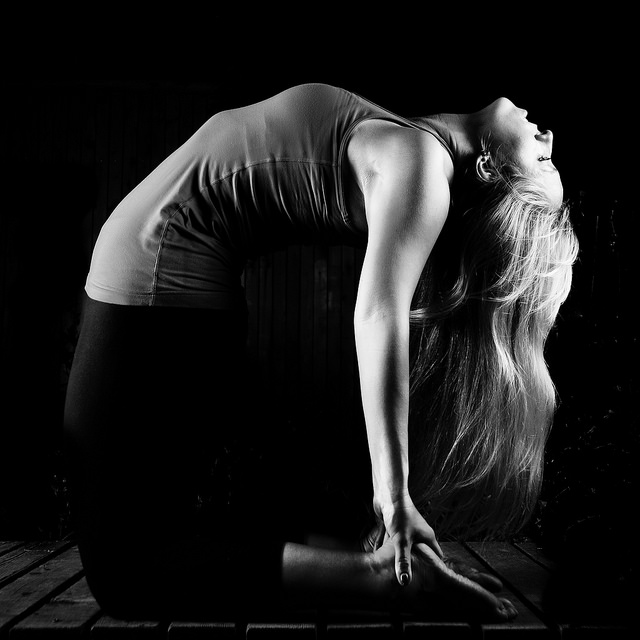I felt a pain in that intense back bend—so distraught, my heart open, offered up to those around me—and then someone would sweep in and take the opportunity to swiftly samurai my heart in half.
Or so that is how it feels every time I was in camel pose for the first two years of my practice.
I felt that I was opening my heart to those around me and they were just taking each breath as an opportunity to stab or slash my vital organ into a million little pieces.
Every single time I took camel pose, I was setting myself up for a minute in child’s pose just to recover.
Camel pose, or Ustrasana, is one of those poses that releases so many hidden emotions. Most of us are unaware of them until we are on our knees, back bent, our face searching for the back of the room, holding our ankles, and sweat rolling down into our eyes like the Chattahoochee River.
The reason camel pose can be so intense because our heart is open and vulnerable. Also, because our backs are often under stretched, over worked and so tight from holding in emotions that are under lock and key.
So many of us think, “Oh yeah, I’ve got my stuff together. I know exactly how I feel about my life and all that encompasses me,” but in reality, many of us find ourselves in this pose begging for the teacher to tell us that we are on our last breath so we can take a child’s pose.
Most teachers will warn you of this before you take camel. They will assure you that it is okay if you cry or giggle. All kinds of emotions are bound to arise when you least expect it and this is one thing that we yogis and yoginis understand—yoga is a journey and on this journey we will discover things about ourselves that we may have been completely oblivious to. But, through the power of yoga and being self-aware, we can find who we are deep within this bag of bones and skin.
The teacher is also an important part of achieving this posture. The times I began overcoming the spitting camel (that is what I call it—vicious spitting camel), I had nurturing positive teachers coaching me on how to move through the pose. Their soothing and loving nature eases the deep emotions brought out in the pose. It’s like the times when we end up crying in savasana for no reason, other than to feel, because that is what yoga does—it makes you feel. It makes you feel alive.
It makes you feel everything that this Universe intended you to feel in that moment. So soak it up, buttercup.
Camel is just one of those asanas that with patience and the right environment, we can unlock all that holds us back as we bend and hold our ankles.
Other backbends include: Setu Bandha Sarvangasana (Bridge Pose), Dhanurasana (Bow Pose), Bhujangasana (Cobra Pose), etc. The list goes on.
We can benefit immensely from these asanas. We can relieve anxiety and stress, relieve chronic back and neck pain, allow the back to work to its fullest expression—which is to be flexible and healthy—we improve our breathing and we open our mind and heart.
Who knew that hanging out upside down could give us a brand new perspective?
If you have a yoga practice, or you are starting one, consider adding backbends to your practice. However, make sure you first know the proper set up so you do not harm your back.
When life turns us upside down—let’s embrace it!
Love elephant and want to go steady?
Sign up for our (curated) daily and weekly newsletters!
Editor: Emily Bartran
Photo: Ann Harkness/Flickr

 Share on bsky
Share on bsky







Read 0 comments and reply